Jaisalmer, called the Golden City for its fortress and temples built in yellow sand, is located in the state of Rajasthan in India, surrounded by the Thar Desert.
If there is something peculiar about Jaisalmer, it is undoubtedly the visit to the walled fort on top of a hill, where sacred cows, vendors, restaurants and more have a place.
The city was founded by Maharaja Jaisar Singh in the 12th century, making it the capital of the dynasty.
It is ideal for wandering through its alleys with dozens of shops selling crafts, fabrics, tapestries, etc. until you reach one of the entrance gates (always guarded by a sacred cow) to the fort, and visit the spectacular havelis or even venture out to explore the desert.
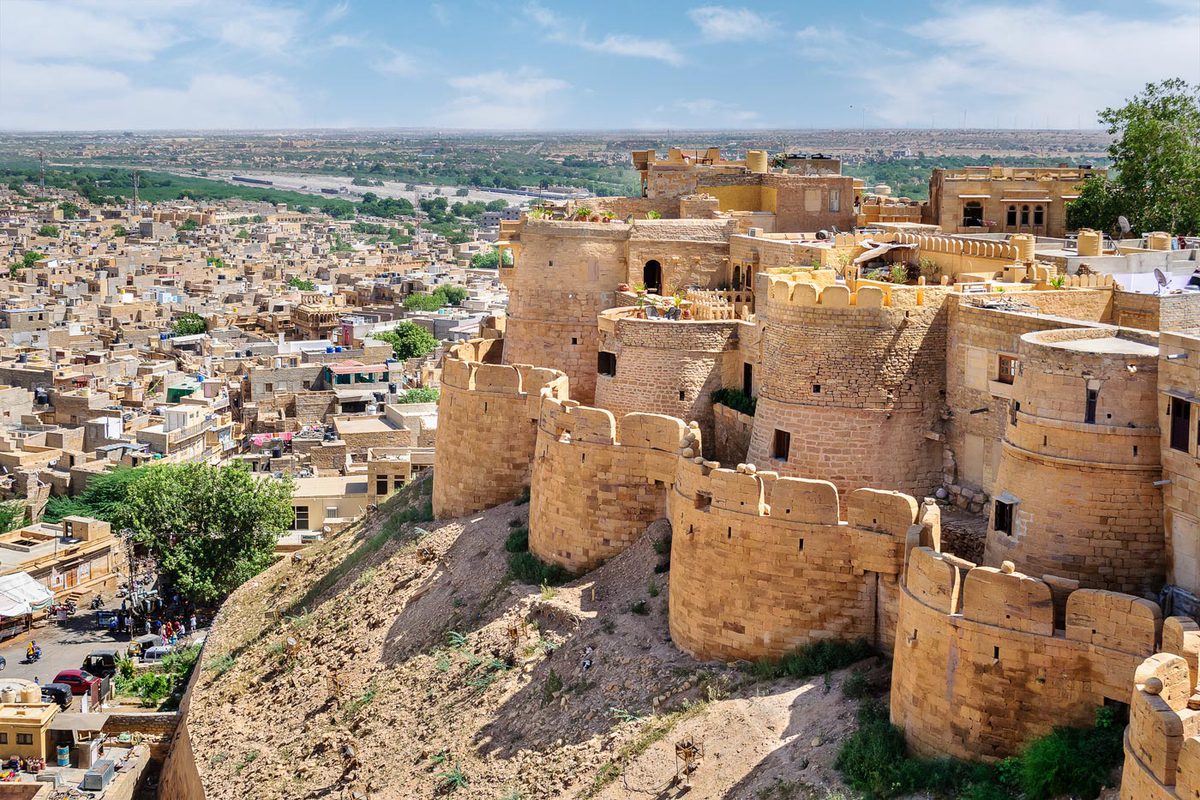
The weather in Jaisalmer, like in other parts of Rajasthan, is characterized by aridity as it is under the influence of the Thar Desert. The city has three main seasons: summer, winter and monsoon.
We know that the subject of visas can be somewhat confusing, especially for India, where obtaining one is an essential requirement for entry. In the article on how to obtain an Indian visa step by step (coming soon) you have information on how to apply for one online for up to 5 years.
It’s essential to travel to India with comprehensive insurance. We were among the first to offer the popular IATI discount, and you can now get it with Heymondo Travel Insurance as well.
You can find more information about both companies through the links provided above, or you can access the discount directly using the buttons below (in both cases, you’ll see the reduced final price on their website):
While many hotels, guesthouses, and restaurants in India offer free Wi-Fi, some travelers prefer or need a constant connection. We’ve included details on obtaining a eSIM India card with unlimited data (from Holafly) or with fixed data but cheaper (from Saily).
If you want to get it directly, here’s the link (with a discount) for both companies:
The train is the most comfortable and safe option if you are traveling through Rajasthan. We remind you that, if the journey takes several hours, you can buy a train ticket in one of the sleeper classes (3rd class). Oh, and don’t worry, because in the morning you will be woken up by the man who says chai, chai chai, chai, chaa…
You can check out our article on trains in India ,and we got you some links to the most popular trains to get to Jaisalmer. We strongly recommend that you book well in advance, as they fill up very quickly:
Road trips in this part of the country are only for those who like extreme sports. Be aware of the curves. If you still decide to take the plunge, here are some links for bus journeys to Jaisalmer.
The nearest airport is Jodhpur, which is 280 km away. You can fly to Delhi and then take a bus or train to Jaisalmer. You can even visit other cities in the Desert Triangle and include Jaisalmer in your tour.
Jaisalmer would not be the city it is if it were not for the Jaisalmer Fort, also known as the Golden Fort, built by King Rawal Jaisal in 1156 and declared a World Heritage Site in 2013 along with other forts in Rajasthan. From the outside, you can see the walls and watchtowers, perfect for defending the city in times of war.
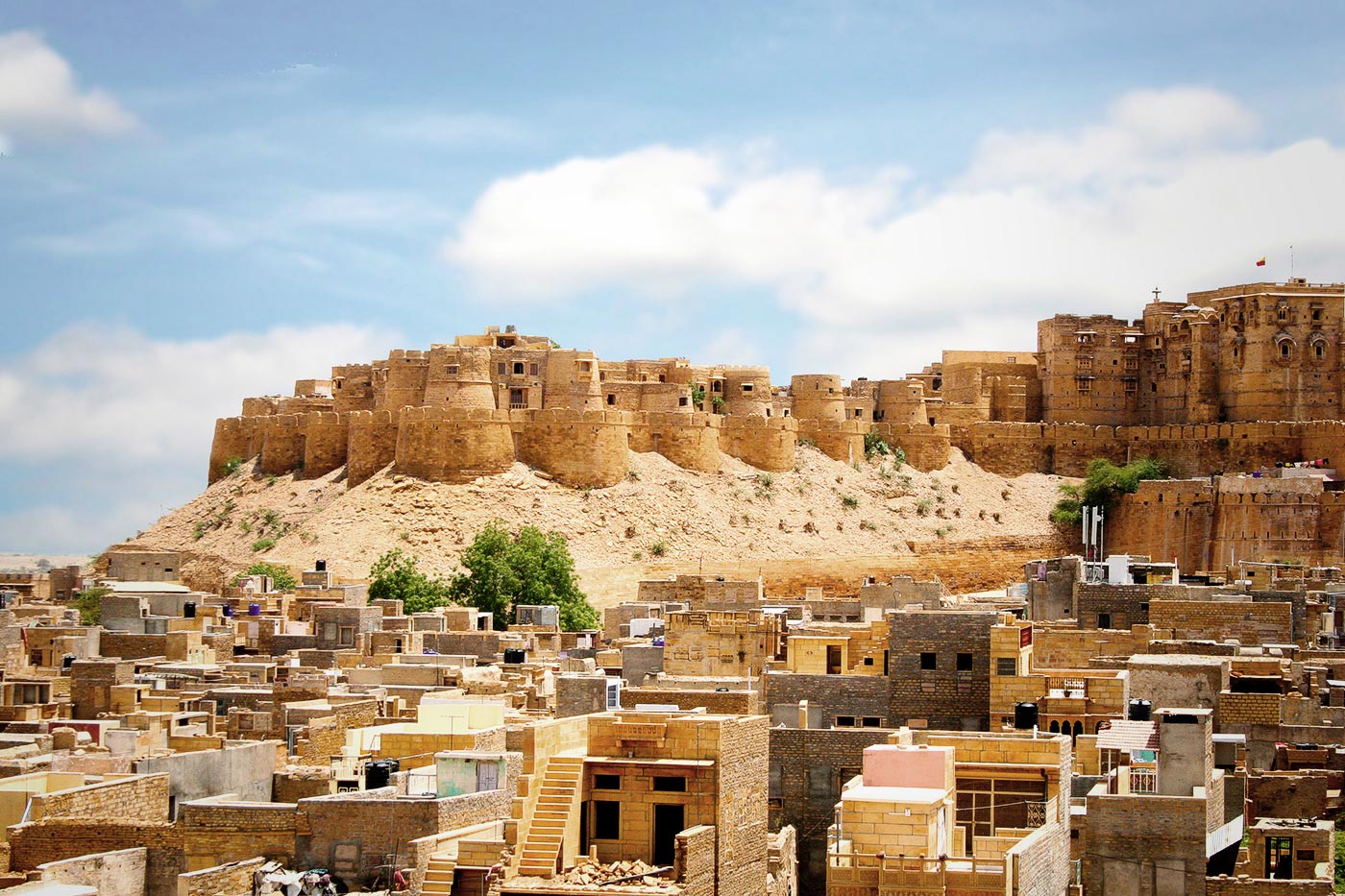
Inside, which can be accessed through different entrances and where we got lost wandering around, there are now houses, palaces, shops, restaurants and tourists. It is said that it is one of the few forts that is still inhabited and this is why it is deteriorating in order to provide water and services inside.
If you want to visit the Jaisalmer Fort and discover many of its curiosities, here are some links to guided tours:
South of Jaisalmer, we find Gadsisar Lake, which we enter through a yellow stone gate called Tilon Ki Pol (The Gate of Tilon). Built in 1400, this tank was created to keep water and provide it to the entire city. Today it never dries up, as it receives a constant flow from the Gandhi Canal.
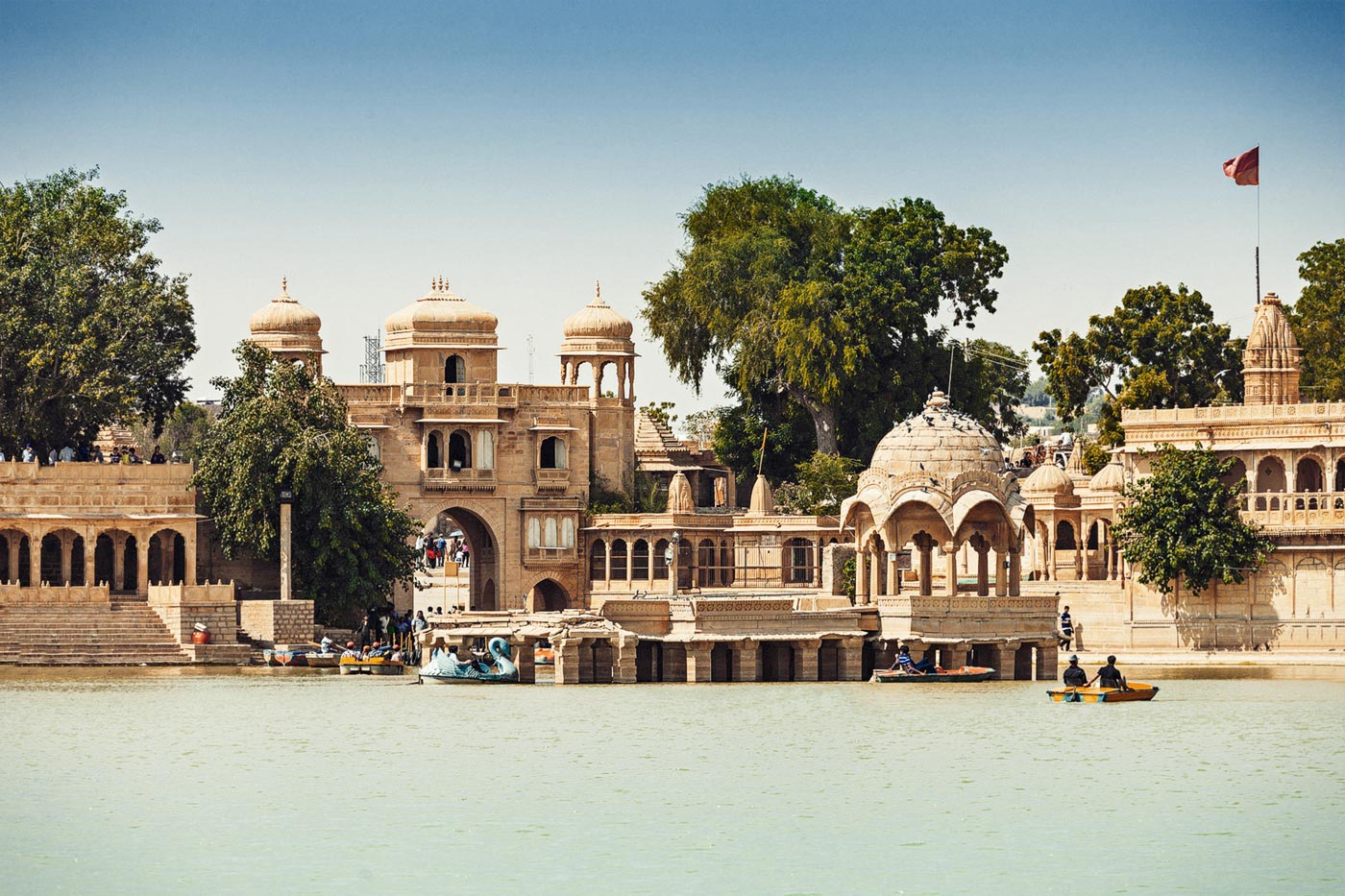
They say that in winter it is the perfect place to observe migratory birds and the rest of the year we can visit it to forget a little about the hustle and bustle of the city, get on one of the boats and visit the surroundings, with several temples and sanctuaries, such as one dedicated to Krishna.
This mansion was built by Prime Minister Salim Singh in 1815, when Jaisalmer was the capital of the kingdom. Salim Singh Ki Haveli is particularly striking for its special architecture, its height and because its top two floors are wider than the lower ones.
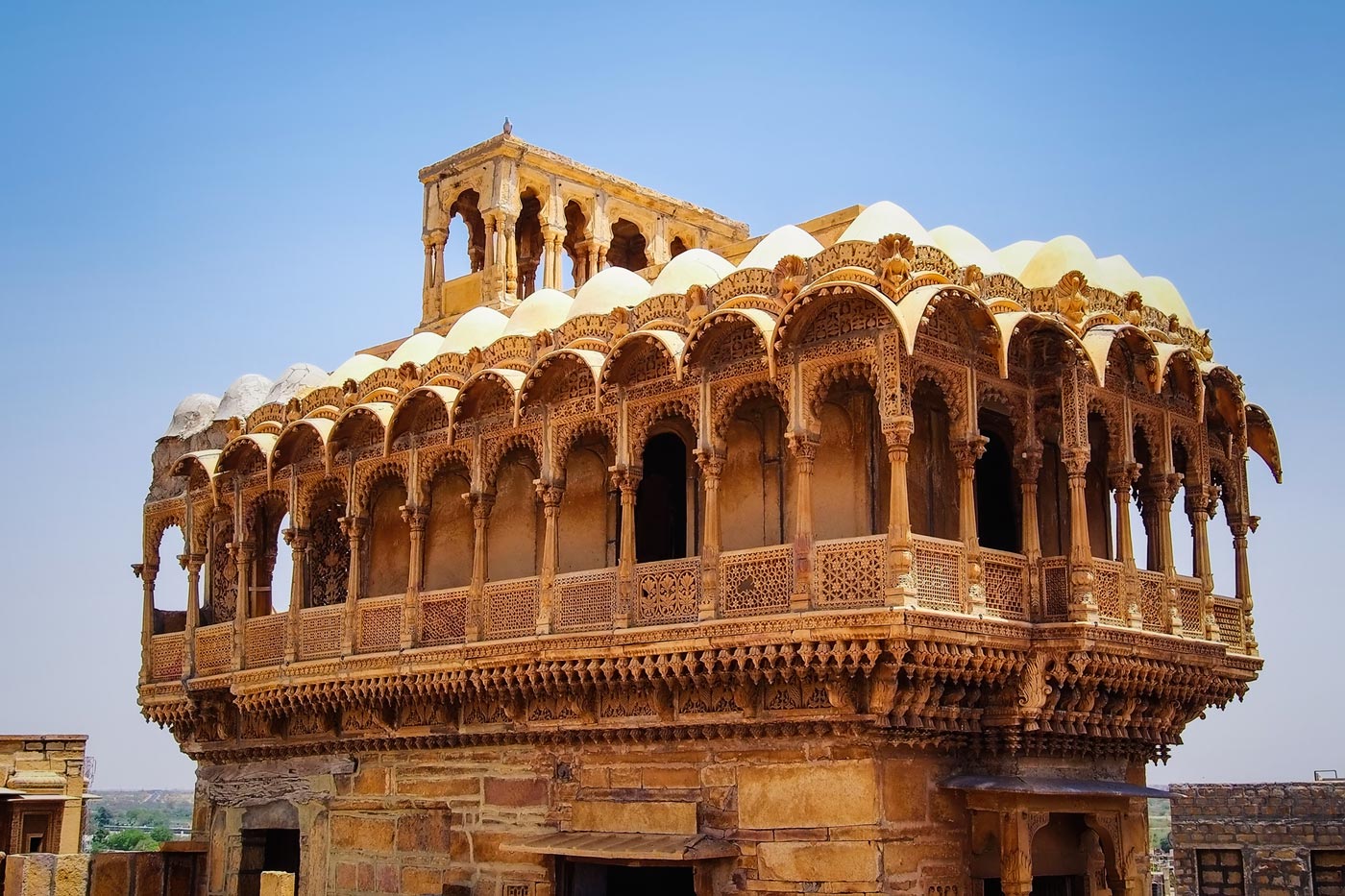
It was built in stone, without using cement, and the roof contains supports carved in an extraordinary way in the shape of a peacock. In addition, on its façade, we can see almost 40 balconies with small domes on top.
A similar but uneven façade makes this majestic palace, Nathmal Ji Ki Haveli, a very special place. Built in 1885 by two architect brothers in a fusion of Rajput and Islamic styles to house the residence of Prime Minister Diwan Mohata Nathmal, it is said that each one started with one side of the façade, hence they are slightly different.
The front part consists of three floors with carved birds, elephants and flowers, in addition to the balconies and windows. Inside, the building is two stories high and contains the subordinates’ quarters.

As in other havelis, the entrance is flanked by two elephants that act as guardians. Without a doubt, one of the wonders of Jaisalmer that should not be missed.
Very close to the Jaisalmer Fort, the Patwon Ji Ki Haveli is one of the largest and most important palaces, as it combines 5 havelis, and was the first to be built in Jaisalmer. The first palace you see, called Korthari’s Patwa, was built by a wealthy merchant in 1805, who decided to build a haveli for each of his 5 sons.
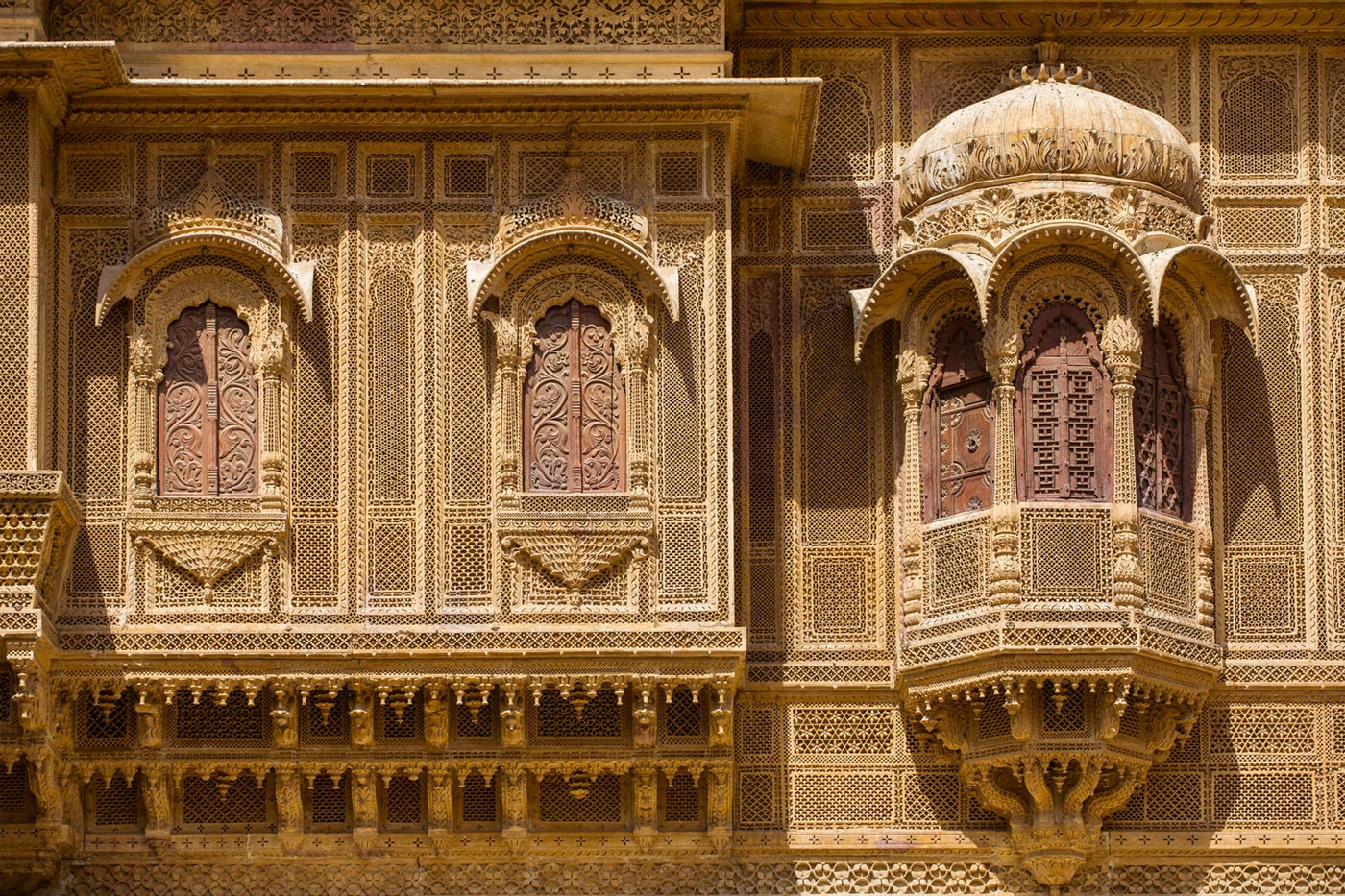
This haveli contains ornate walls, colorful windows, arches, beautiful balconies and doors, all carved in yellow stones. Today it is a government building.
A cenotaph is a tomb or memorial built in honor of a person. Bada Bagh, also called Barabagh (Great Garden) was ordered to be built by Lunkaran, son of Maharaja Jai Singh II in honor of his father, who built a dam beside a lake during his reign in the 16th century creating a green area in this part of the desert.
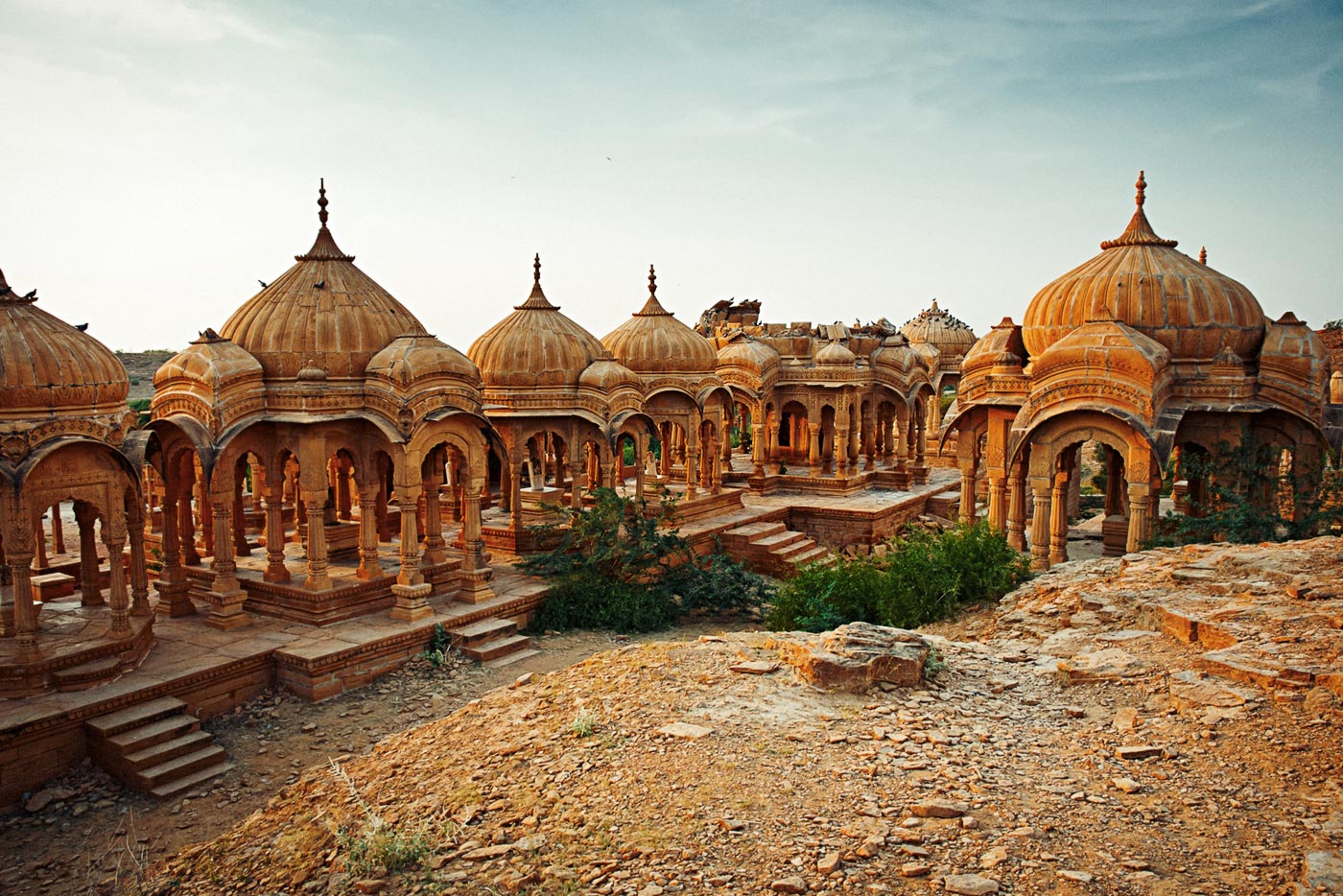
It is located on a small hill and one can access different golden cenotaphs —called Chhatris— of the royal family in various sizes (the more important the person, the larger the cenotaph), and each of them with a marble plaque with inscriptions.
The last of the cenotaphs built dates back to the 20th century, and was left half-built after India’s independence.
Lodhurva, or Lodrawa, at15 km from Jaisalmer, is believed to have been the ancient capital of the Bhatti dynasty, until the 12th century, when Rawal Jaisal founded Jaisalmer and made it the new capital.
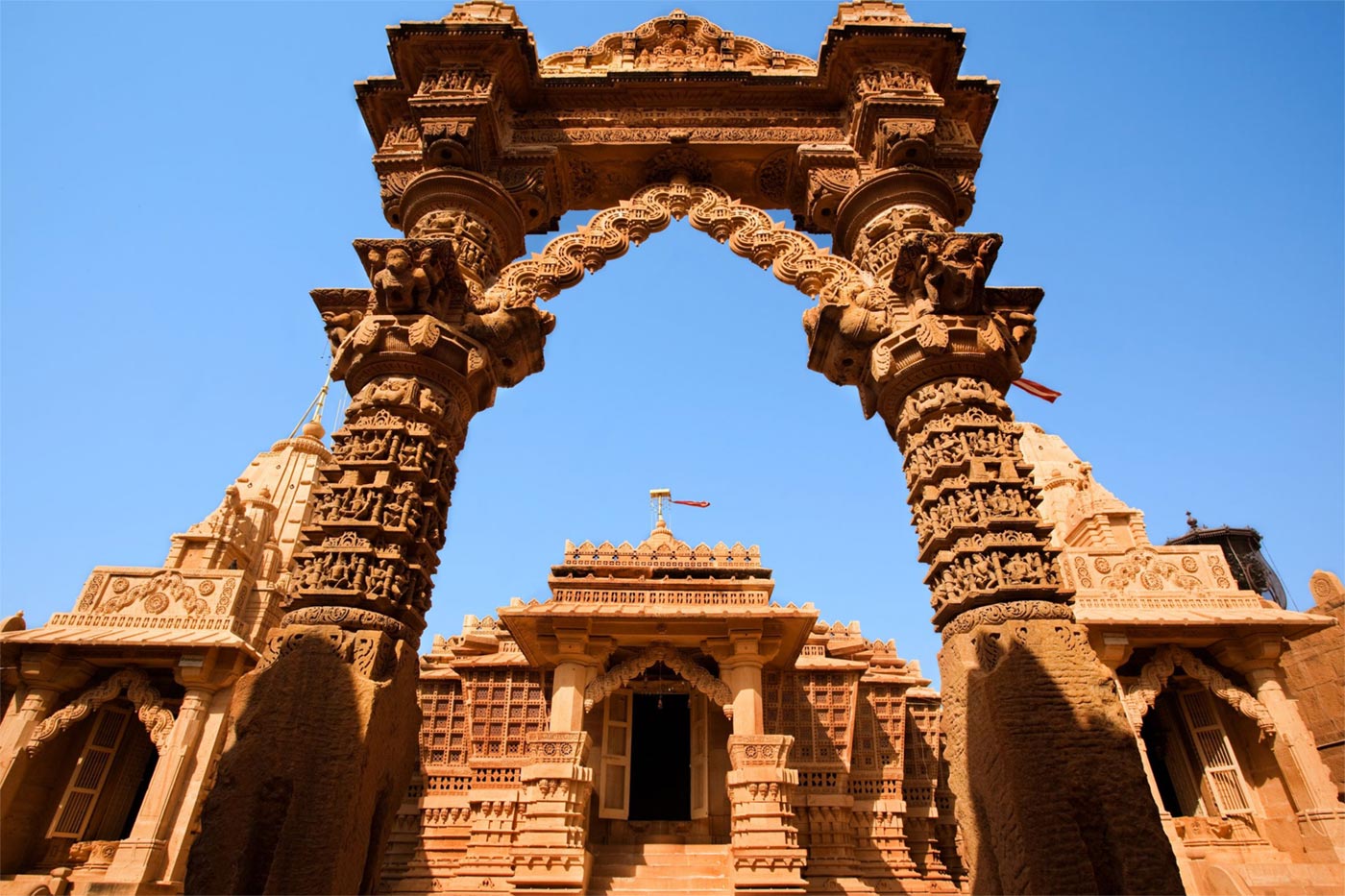
It is best known for its temples and ruins, including its Jain temple dedicated to the 23rd tirthankara, Parshvanatha, a being who, after having achieved transcendence and liberation, becomes a master who teaches the Jain path.
This temple was destroyed in the 12th century and rebuilt in the 17th.
Today, Mandir Palace is a hotel, a destination similar to many palaces in Rajasthan. Its construction began 300 years ago by different rulers, and is a fusion of Rajput and Islamic architecture. The last pavilion of the complex was built in the early 20th century.
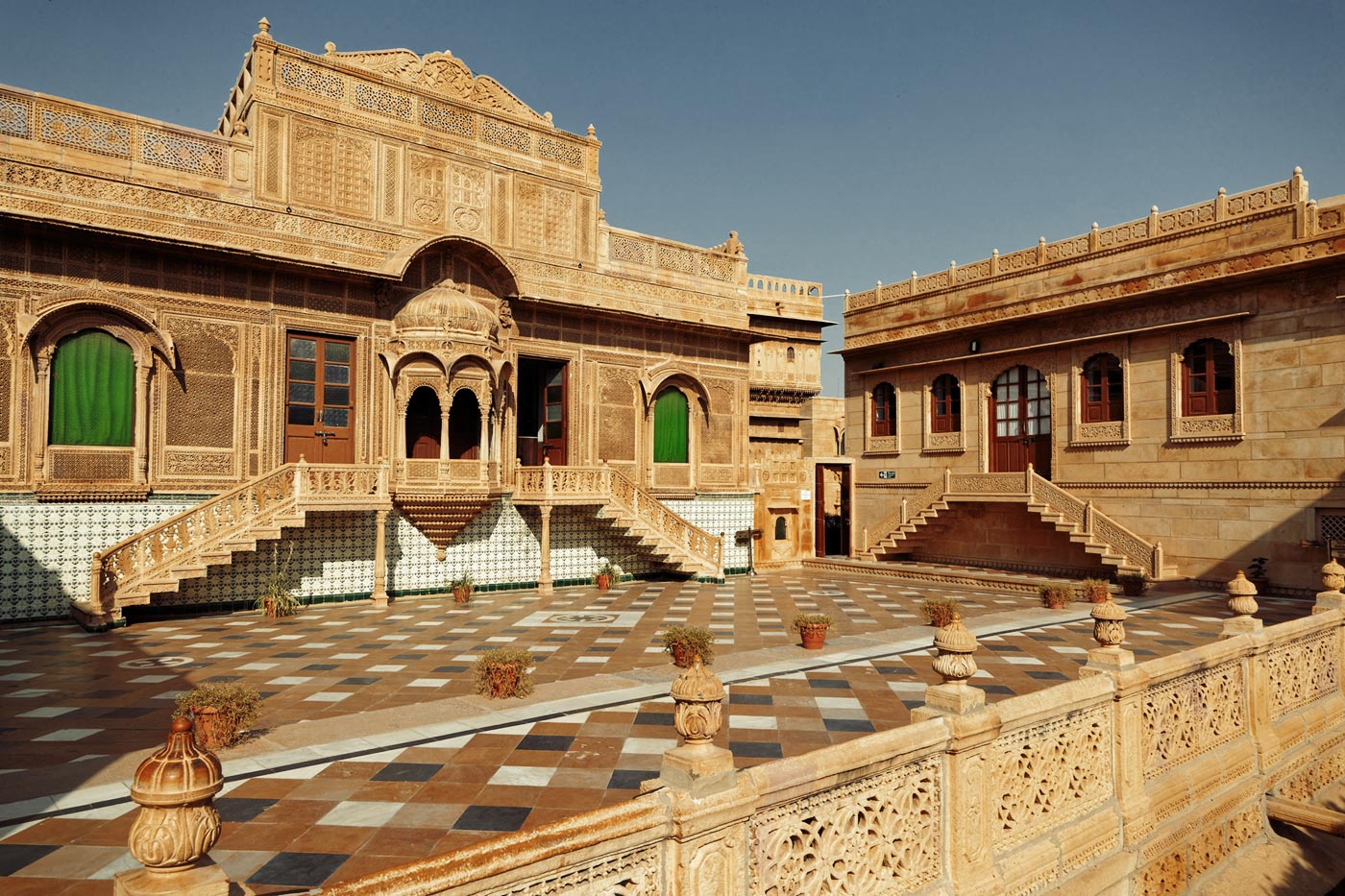
Its wonderful stone carvings on balconies, canopies and staircases show the tremendous work of the craftsmen who built it.
Inside, the palace rooms are now used for guests and if you can visit it you will enjoy its pool, gardens and patios in a very special setting.
Several theories are now trying to explain the reasons for the abandonment of Kuldhara, 18 km south of Jaisalmer: lack of water supply, persecution of its inhabitants by the state governor at the time, or even an earthquake.
Legend has it that the Paliwals disappeared in a single night to prevent the state governor from taking revenge on them by raising taxes when they refused to allow him to marry a local girl.
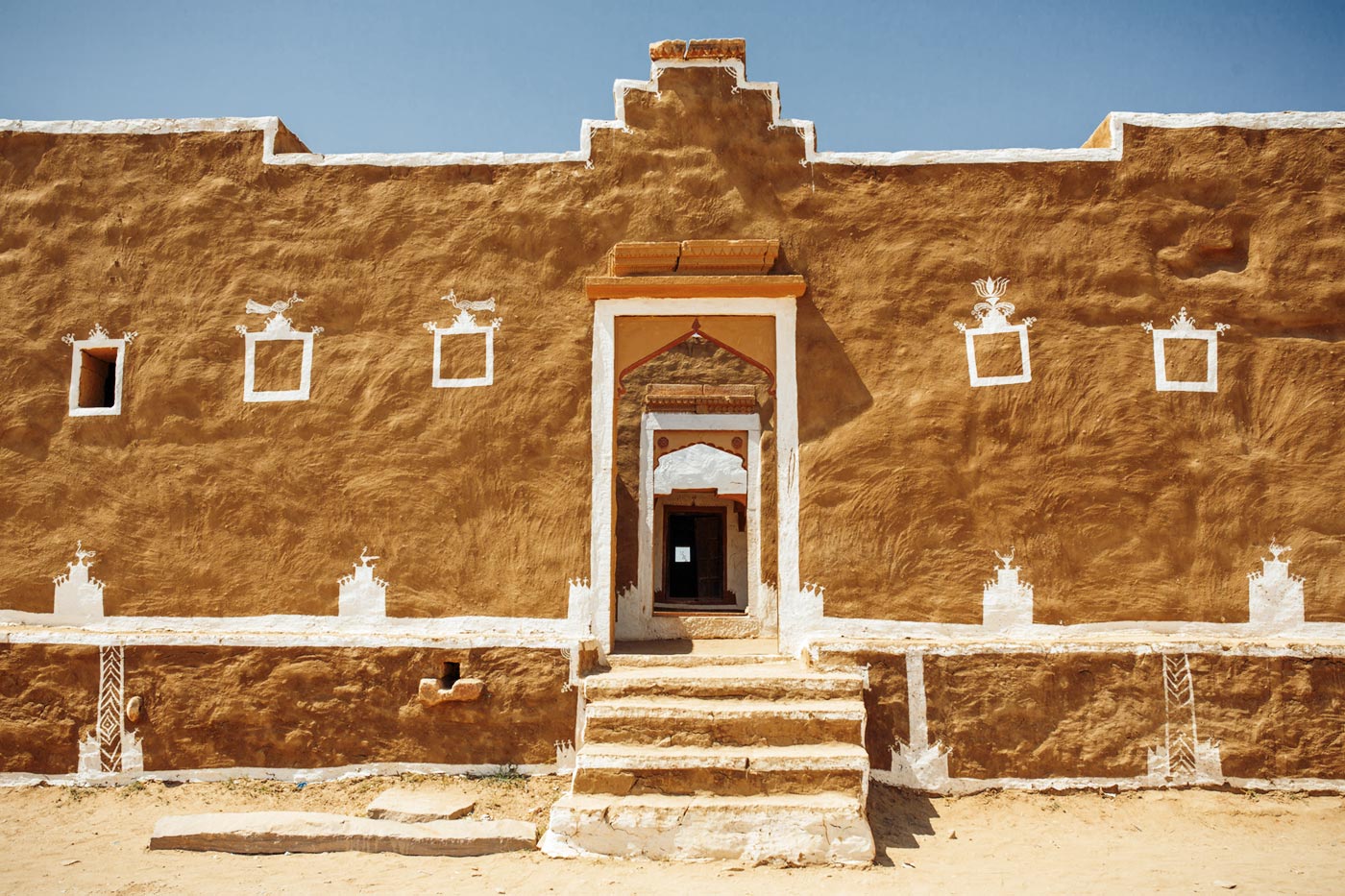
It is also said that, during the exodus, the town was cursed so that no one could live there. What is certain is that this town, built in the 13th century and abandoned in the 19th century, became a ghost town (something that the local government is trying to change in order to attract tourism).
The Thar Desert covers a large area of western Rajasthan and is home to 40% of the state’s population, making it one of the most populous states on the planet. However, around Jaisalmer you won’t find a typical sand desert, but rather an arid landscape with occasional isolated dunes.
Antelopes, gazelles, foxes, snakes and lizards coexist in protected areas alongside nomadic shepherds and other settlements.
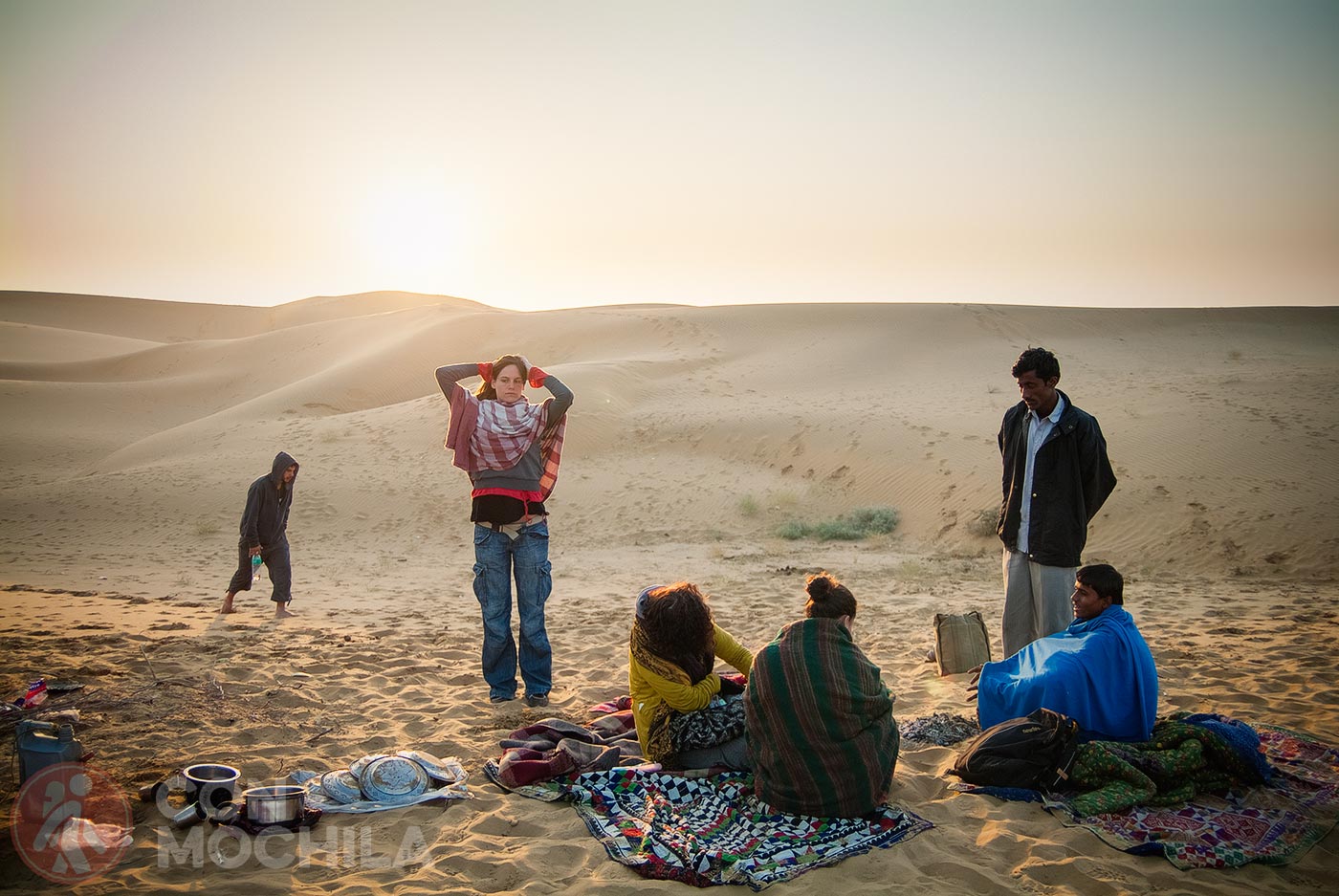
ATTENTION! If you are planning to go on a desert excursion, check out our article on camel treks below.
The Desert National Park is located within the Thar Desert, just a few kilometers from the border with Pakistan, and was proposed as a World Heritage Site by the state government in 2009 to protect the flora and fauna species that inhabit it. Among them is the Indian bustard, a bird that is in danger of extinction and has become the representative bird of Rajasthan.
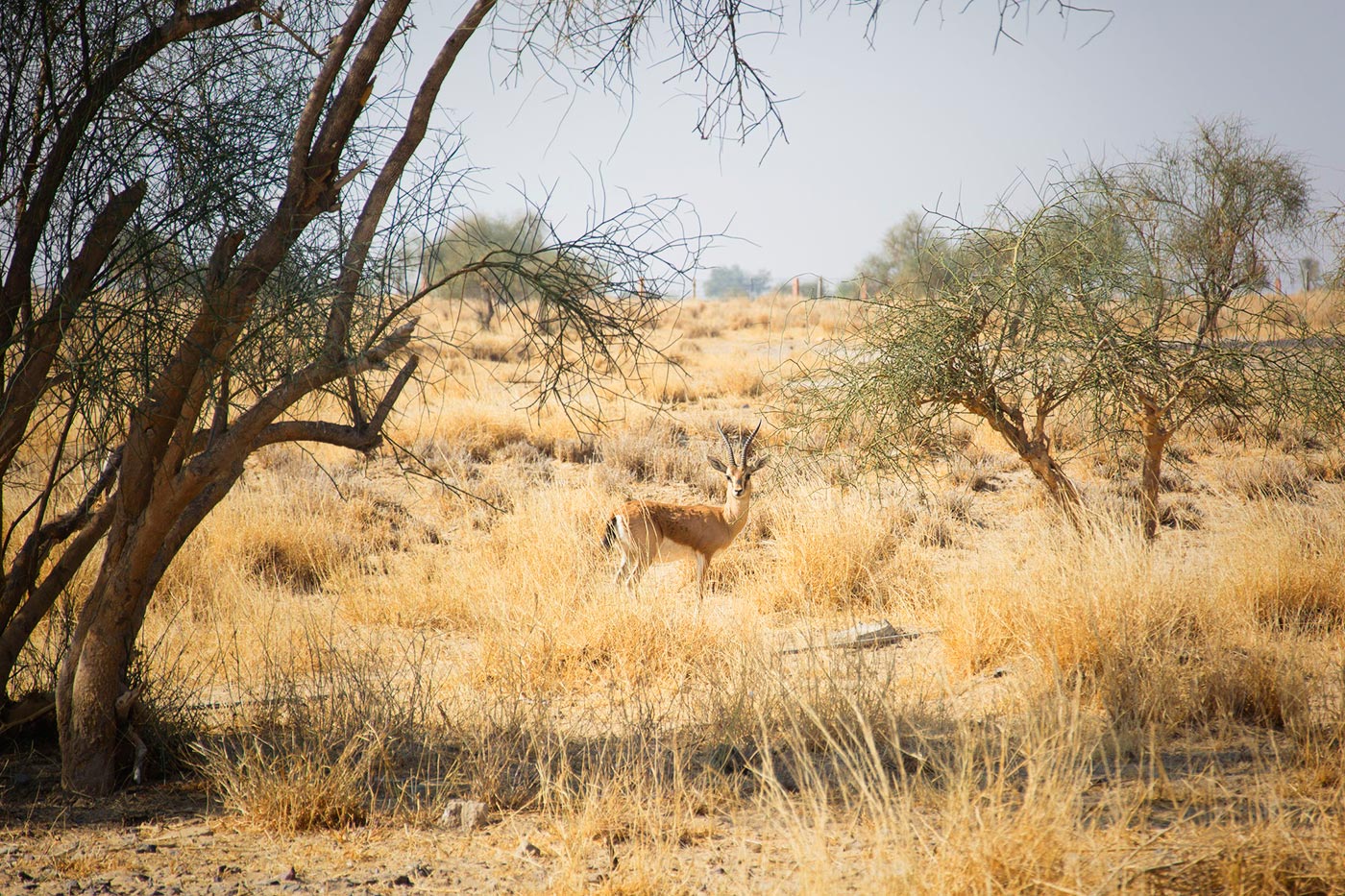
In addition, other species such as foxes, wild cats, hedgehogs, as well as some 40 species of reptiles, also live in this protected area.
ATTENTION! If you are planning to go on a desert excursion, check out our article on camel treks below.
Khuri is a small village 50 km from Jaisalmer, famous for its sand dunes. It is located in the Desert National Park, and from here you can visit the desert. For now, few visitors come to see the sunrises and sunsets from the dunes, but you can find some guesthouses, and there are locals who offer their homes for homestays.
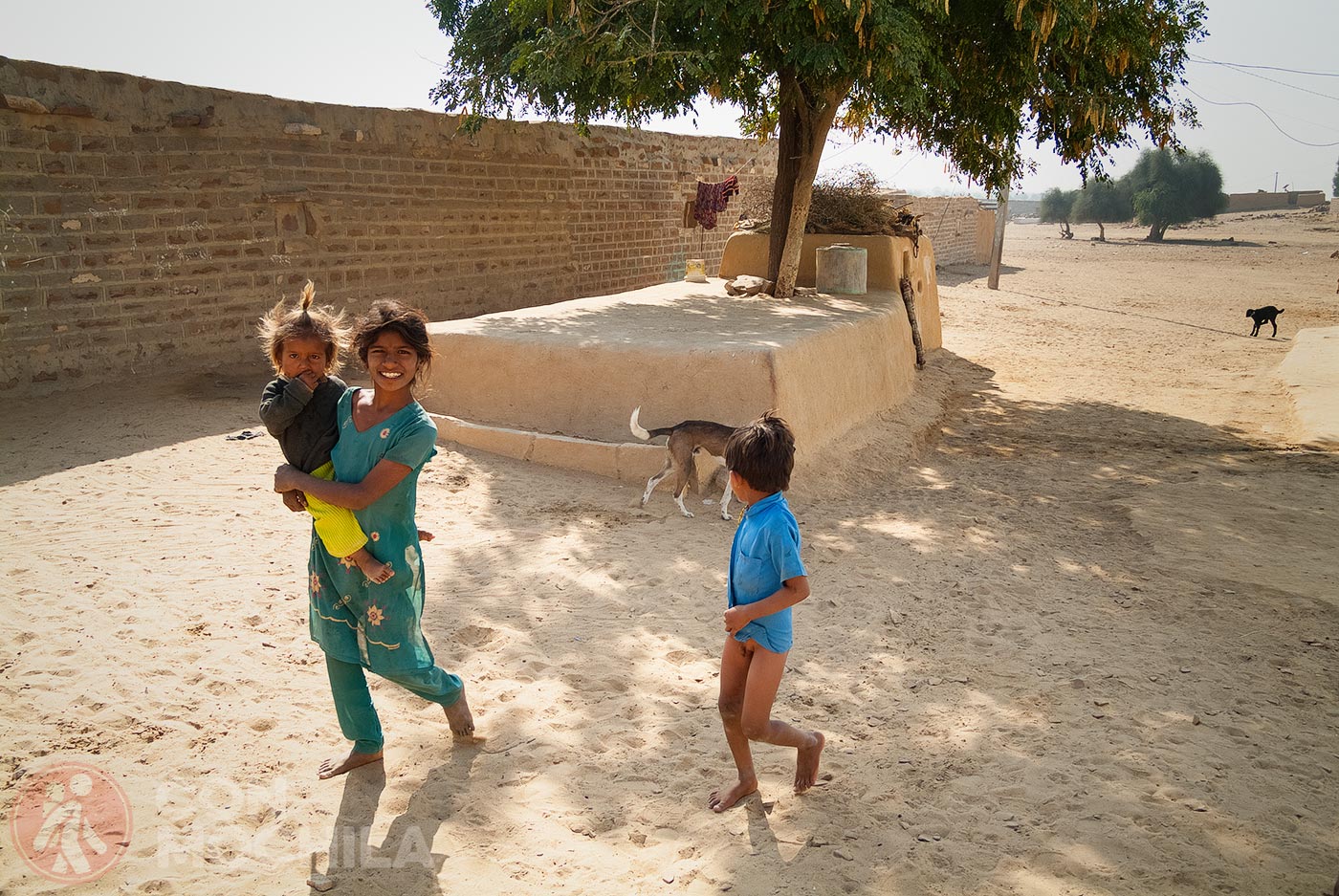
If you are a history buff, you can learn a few things about what happened during the Battle of Longewala in 1971. At the Longewala War Memorial you can find artifacts used during the war between India and Pakistan, like tanks and guns, and visit some of the bunkers used by soldiers during the desert war.
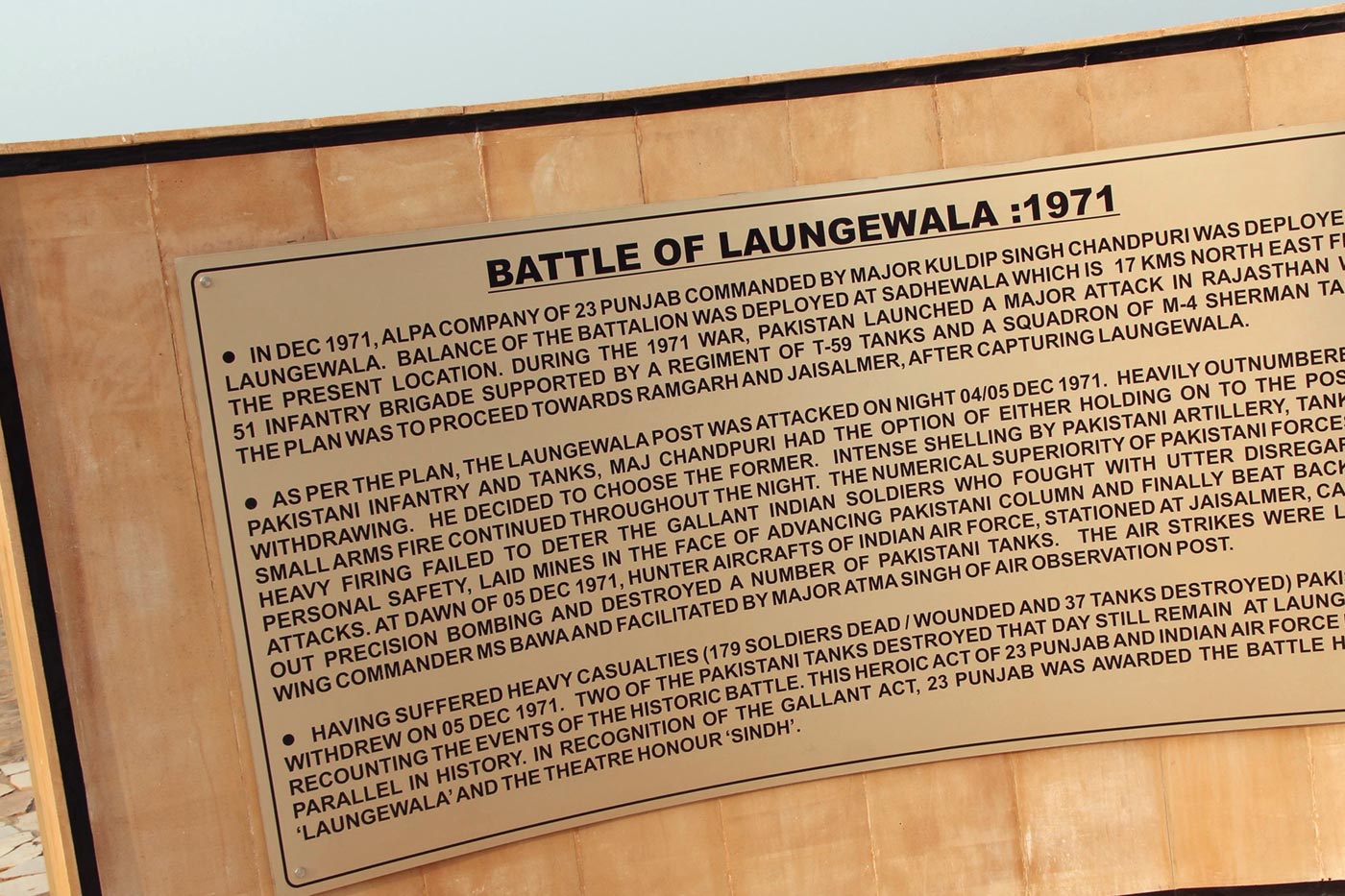
A famous Indian film, Border, was shot in this area, which recounted the events that occurred during the battle.
Tanot Mata Temple is located very close to the Longewala War Memorial, a few kilometers from the Pakistan border, and is managed by the border guards. It is considered a sacred place, as Indians believe it had a lot to do with the success of the Battle of Longewala.
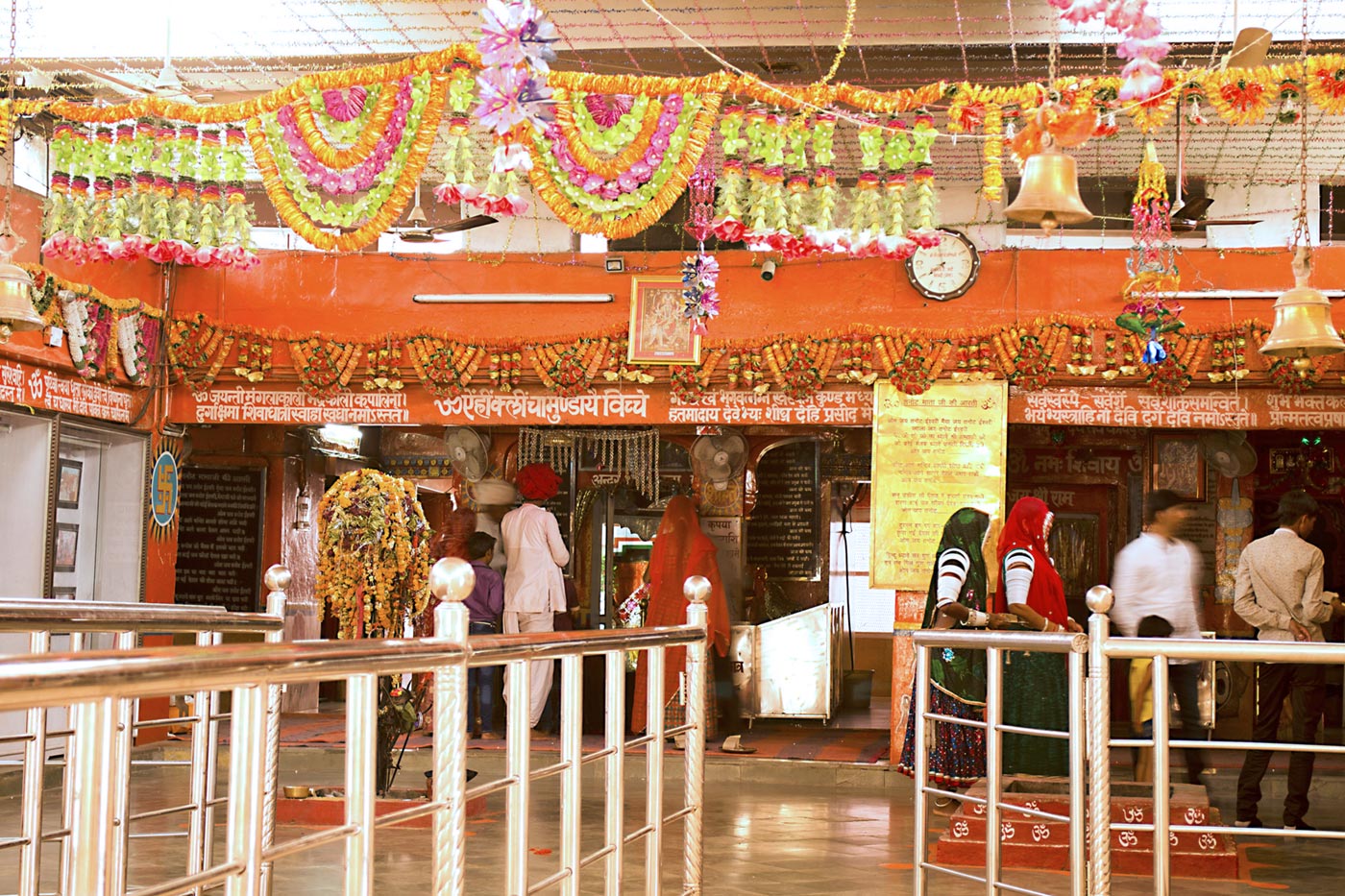
It is said that more than 65 bombs fell on Tanot Mata and none destroyed it. Some of them (unexploded) are displayed in the temple as a symbol of protection. Scenes from the Indian film Border were also filmed here.
While in Jaisalmer, you can visit other cities in the so-called Desert Triangle such as Bikaner or Jaipur.
The Shiva Palace Hotel is located outside the city walls, just 40 m from the Jaisalmer Fort, where the atmosphere is more relaxed. The hotel rooms are a bit austere, with a bed and a bathroom and little more. One of the things we liked most is the rooftop, where they have their own restaurant, with an area to relax or read.
You can also take a look at these recommendations:
Desert treks have become a very popular tourist activity, visiting some small villages along the way and sleeping rough in the dunes. Most of these tours offered in Jaisalmer are done by camel and, besides not being the most comfortable way to do it, not all companies treat their animals equally.
We recommend that you read this valuable information from FAADA before booking any tour.
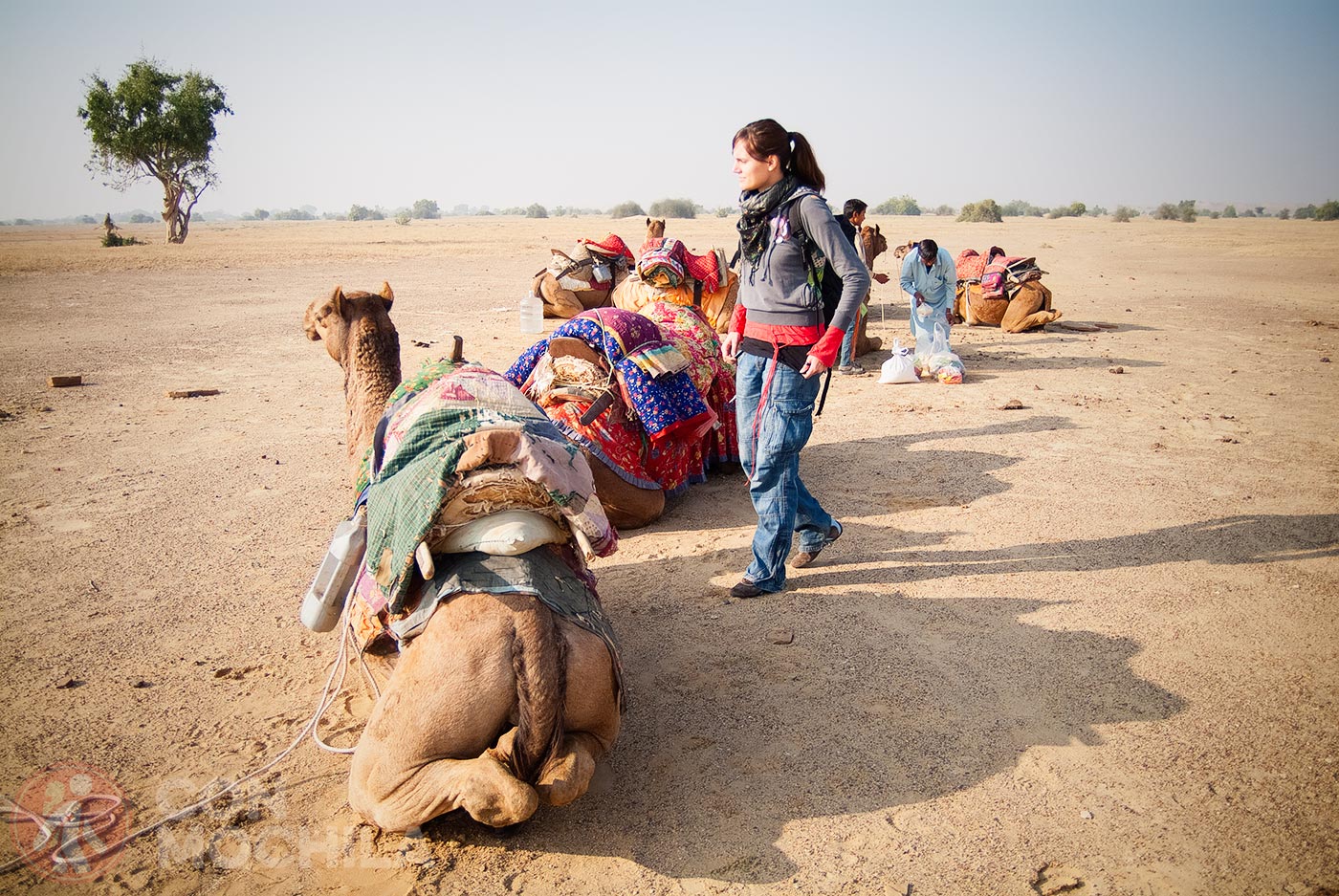
In the center it is worth walking and wandering between havelis and stalls. Go through one of the gates of the walled enclosure and lose yourself in its alleys. Be careful! Not only cows and dogs roam around Jaisalmer, sometimes you can even come across a camel.
Click on the image and it will take you to a new Google Maps window with all the points of interest to travel around Jaisalmer.
ACTIVE CAMPAIGN !
Until december 1st, you can get an automatic 15% discount on your Heymondo travel insurance.